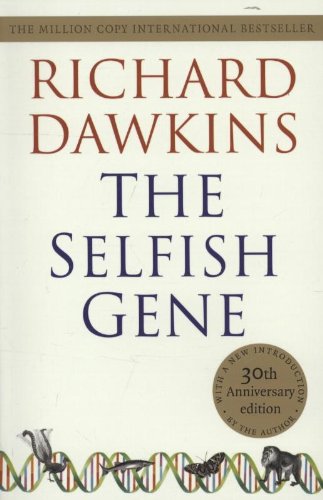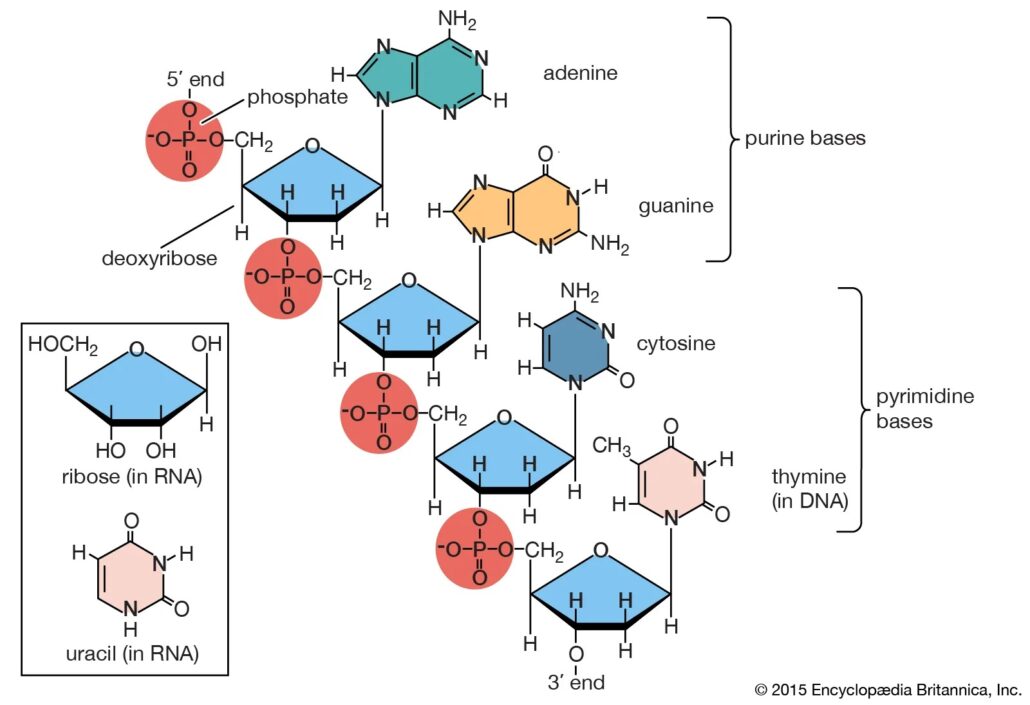The Selfish Gene
Author: Richard Dawkins
Genre: Popular Science

What could make this book be voted (Royal Society, 2017) the most influential scientific book of all time? Even ahead of Darwin’s Origin of Species and Newton’s Principia Mathematica. It is its central ground breaking theme: We usually see organisms like humans as the unit of survival and using genes to propagate our species. But this book, written in 1976 (the year I was born!), forcefully argues that genes use (create, maintain) us to make more genes of the same type. “They created us, body and mind; and their preservation is the ultimate rationale of our existence… we are their survival machines.” Hence the title, The Selfish Gene.

Dawkins starts at the very beginning and explains the story of life and replication. Before life on earth, there still were simple compounds like water, carbon dioxide, methane and ammonia, all found in many other planets too. Chemists have put all these simple substances in a flask and supplied a source of energy such as ultraviolet light or electric sparks – artificial simulation of primordial lightning. And very soon “a weak brown soup forms containing a large number of molecules more complex than the ones originally put in.” Amino acids have been found – usually thought of as a diagnostic for the presence of life. More complex conditions yield organic substances like purines, building block of DNA itself.
“At some point a particularly remarkable molecule was formed by accident. We will call it the Replicator… it had the extraordinary property of being able to create copies of itself.” Soon we had a large population.
“But when the replicators became numerous, building blocks (in the primeval soup) must have become scarce… Some of them may even have ‘discovered’ how to break up molecules of the rival varieties chemically… others perhaps discovered how to protect themselves by building a physical wall of protein around themselves. This may have been how the first living cell appeared. Replicators began not merely to exist, but to construct for themselves containers… or survival machines.”
And then “the truth that still fills us with astonishment”: “We are survival machines – robot vehicles blindly programmed to preserve the selfish molecules known as genes… A monkey is a machine that preserves genes up trees, a fish is a machine that preserves genes in the water…”
Dawkins, Oxford professor that he is, then takes us through the details. “DNA molecules are chains of nucleotides and come in only four different kinds, whose names may be shortened to A, T, C and G. Identical in all plants and animals (the G in me is identical to the G in, say, a snail), the difference is only in “the order in which they are strung together”. And hence different survival machines for the same gene. The process how genes influence reality, through protein synthesis, is explained. Also genes work by cooperating with one other while they are competing too. For example, a carnivores animal needs the gene for sharp cutting teeth and the gene for the right kind of intestines for digesting meat.

Lot of interesting storytelling, like the concept of dominant (brown eye) and recessive genes (blue eyes), so that apparently brown eyed adults may be carrying the blue eye gene for generations till both the chromosomes coincidentally have blue eye gene, and the child suddenly has blue eyes. There are also some macabre examples from nature – on how male grasshoppers and spiders have to decide between the evolutionary act of copulation versus the risk of being eaten alive by females who happen to be cannibalistic. Similarly, some parasites inject a chemical in a larvae because of which it cannot blossom into a butterfly and just keeps getting bigger and bigger, only to be eventually devoured by the parasite. One more: bugs in some animals attack their testicles to castrate them. The animal’s nutrients then are all re-directed to muscles which become big, only to be eaten by the parasites.
In an intriguing Chapter on Memes, Dawkins compares cultural evolution with genetic evolution. Memes could be ideas, clothes, fashion that “propagate themselves in the meme pool by leaping from brain to brain via a process which, in the broad sense, can be called imitation… Socrates may or may not have a gene alive in the world today but the meme-complexes of Socrates, Leonardo, Copernicus and Marconi are still going strong.”

As one can imagine, the core theme of the book (humans as mere survival machines for selfish genes) raised many moral and existential questions. What about our creator? What about altruism? Dawkins is the quintessential atheist, perhaps one of the most vocal apologists of atheism in our times [Read his other book The God Delusion]. On altruism, he argues that most altruism is of the reciprocal kind (you scratch my back, I scratch yours), at least in the realm of evolution. “Individual organisms behave altruistically ‘for the good of the genes’, for example by feeding and protecting kin who are likely to share copies of the same genes.”
But Dawkins does offer that free will is real and humanity may be gaining power over the selfish replicators. “Our brains have evolved to the point where we are capable of rebelling against our selfish genes.” Hence, he makes no claim on the psychological aspects of altruism.
Why should you read the book: The book sold 1mn copies and was translated to 25 languages, so it did strike a chord with many readers. If science and our origin, and how to correctly interpret evolution theory and natural selection, excites you, this book is for you. Try finding the 30th anniversary edition with an introduction from Richard Dawkins that sums up the changes since he originally published the book.
Goodreads Link: The Selfish Gene by Richard Dawkins (goodreads.com)

 This information will never be shared with third party
This information will never be shared with third party
Post A Comment
Want to join the discussion?Feel free to contribute!